-
![img]()
How to Make Your Own Peanut Butter
Merryn Tan
August 26, 2021
2 min
With the onset of the pandemic and us spending most of our time at home, I started to explore more in the kitchen.
One of the best things I’ve learned is making my own peanut butter. It is ridiculously easy to make, I regretted not learning to make it earlier.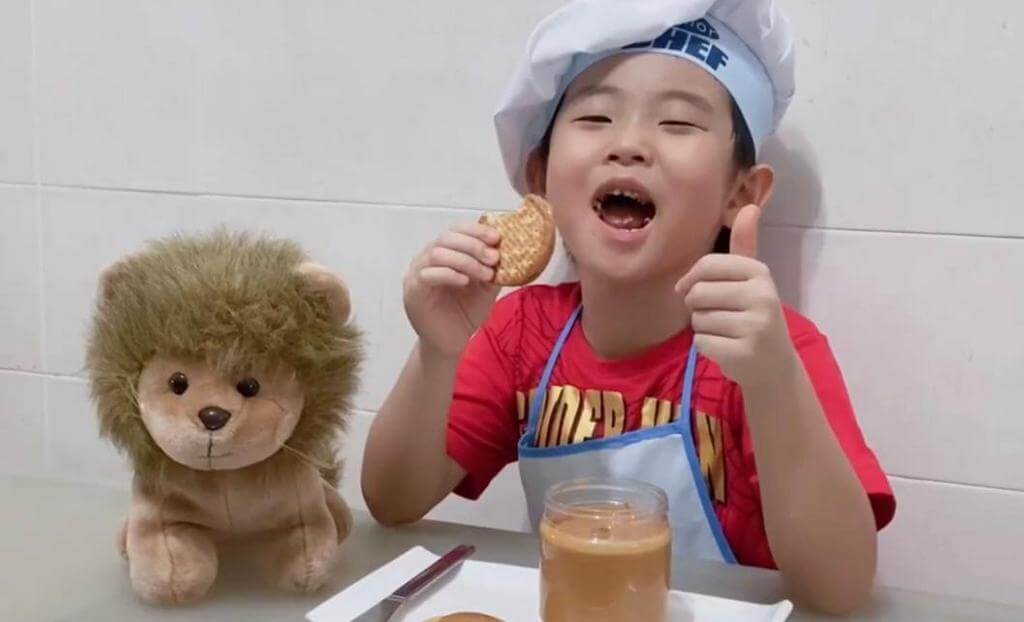
Homemade Peanut Butter - A Good Source of Protein
Peanut butter is a good source of protein. Homemade peanut butter is best because it is cheap, delicious, and most importantly, you know what goes into it. You can also customise it according to your preference.
I've also baked mouth-watering Dairy-Free and Egg-Free Peanut Butter Cookies with my homemade peanut butter. It is so yummy and perfect for vegans.
All you need to get started is a good blender and maybe an oven because toasted nuts elevate the peanut butter a notch higher. It warms the oils in the nuts and helps to make everything blend together easier.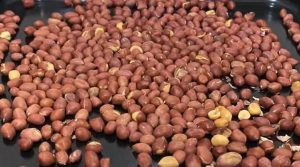 If you don’t have an oven, you can pan fry the nuts without oil.
If you don’t have an oven, you can pan fry the nuts without oil.
We need a good and powerful blender or food processor to blend peanuts into smooth and spreadable peanut butter.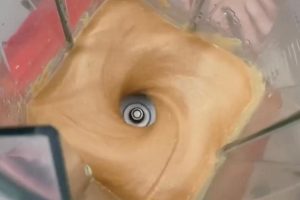
When you first start the blending process, the peanuts look impossible to mix but allow the blender to go a little longer and you'll see it magically turn into amazingly rich peanut butter.
Ready to surprise the children with your own homemade peanut butter? Let me show you how:
Homemade Peanut Butter
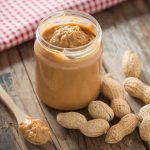
- 300 g roasted peanut
- 4 tbsp peanut oil (You may also use vegetable oil)
- 2 tbsp butter
- 3 tbsp brown sugar (According to your sweetness preference)
- 1/2 tsp salt
Roast raw peanuts at 170C until brown.
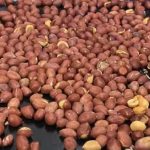
Once roasted, remove the skin. Alternatively, you can also just roast skinless peanuts. It is easier and faster this way.
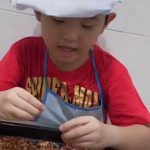
Sieve to get rid of the skin.
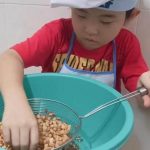
Add oil, butter, roasted butter and brown sugar into a blender or a food processor.
You can substitute brown sugar with honey but I personally prefer it with brown sugar.
I added some salt to improve the overall flavour of the butter.
Blend until smooth.

When you first start the blending process, the peanuts look impossible to mix but allow the blender to go a little longer and you'll see it magically turn into amazingly good peanut butter.
To make crunchy peanut butter, just add coarsely blended peanuts into the peanut butter and mix well.
Pour into a clean and dry container.
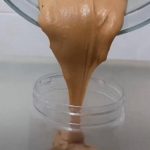
Spread onto your favourite crackers or bread. It is even good to eat it on its own.

Now that you know how to make peanut butter, you can also make your own almond butter or any other kind of nut butter that you like.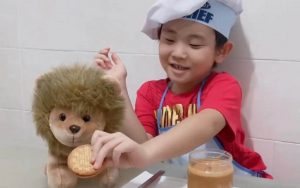 Spread on crackers or sandwiches, this delicious homemade peanut butter tastes even better when eaten with a friend.
Spread on crackers or sandwiches, this delicious homemade peanut butter tastes even better when eaten with a friend.
Watch this video to see how easy it is to make your very own peanut butter:
https://youtu.be/vRhy9sGMVik -
![img]()
AskMeDoctor! Season 2 Episode 18: Is My Child Colour Blind or Could He Have Cataracts?
Fairuzal Aula
August 20, 2021
2 min
Colour blindness is usually hereditary which means it is passed from the parents to the child. Eyes and visions are one of the most critical parts of a child’s development. Image Credit: parenting.firstcry.com
Image Credit: parenting.firstcry.com
By having regular visits to your eye care provider, you get to know about your children’s eye health. Today we are very fortunate to have Dr. Fiona Chew with us, to understand more about your children’s eye health.I heard that children can also get cataracts, but, is that true, doctor?
Dr. Fiona: Cataract unfortunately is possible in children. It is rare, however, even from birth, children can have cataracts.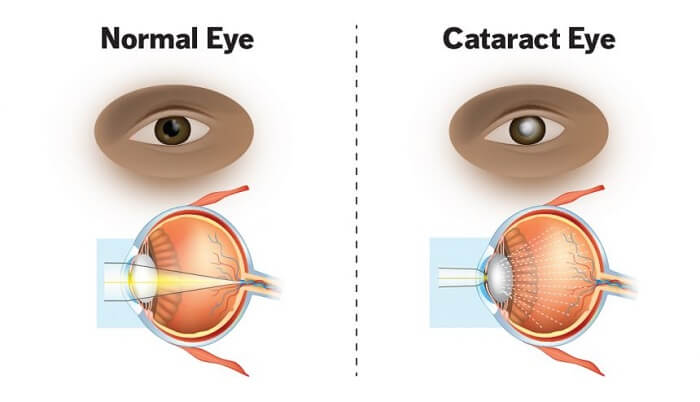 Image Credit: anayaclinic.com
Image Credit: anayaclinic.com
Why can they have cataracts?
Can be due to either one, hereditary.
Number two, they can have some kinds of infections while in mummy’s tummy at that time.
Or it could be due to even trauma later on or injury.
But, most important about paediatric cataract, if it is detected early and treated early, the visual outcome is quite good.
The problem is when we see cataract after about like three years of age, just say they had it from birth, but they only came later on.
What happens is the eyes start losing focus and even after you have done the surgery, it does not regain 100% of the vision and the eyes start moving here and there, in a condition called nystagmus or jiggly eyes.
So, it is best to fix it as early as possible even as a baby, to make sure the baby has the best vision possible.Do I have to bring my baby to an ophthalmologist to check?
Dr. Fiona: Basically, we do recommend regular eye examinations. Usually at birth, the kiddy eye doctor, the paediatrician will torch the light to make sure okay, the eyes look straight, there are no abnormal white reflects in the eye.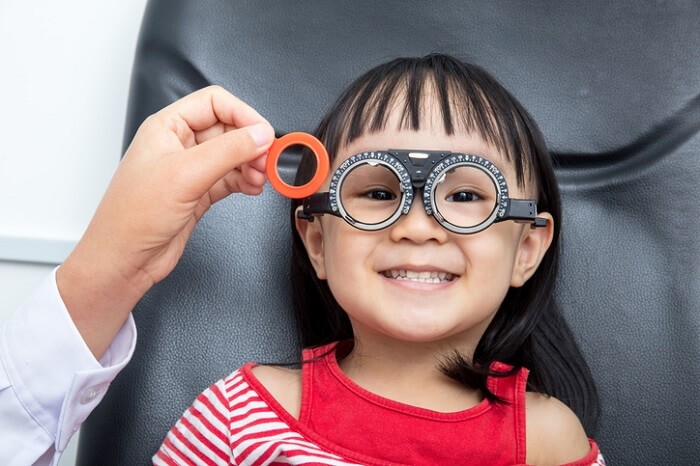 Image Credit: silversteineye.com
Image Credit: silversteineye.com
Then, later on, if the child has no problems, if it is fixating that he is looking at things properly, you can probably bring the child about three years of age for the first eye checkup.Is colour blindness familiar among children?
Dr. Fiona: Colour blindness is usually hereditary which means it is passed from the parents to the child.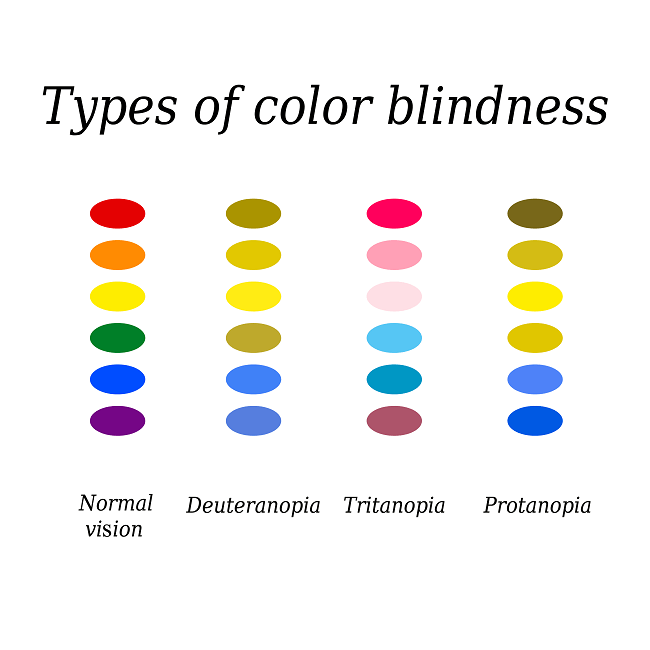 Image Credit: edplace.com
Image Credit: edplace.com
However, there are certain conditions where the child who was normal suddenly became colour blind.
Why?
Maybe because they had injury or inflammation or infection to the nerve of the eyeball, or even to the brain.
Well, detection of colour blindness will depend on the child’s ability to answer questions.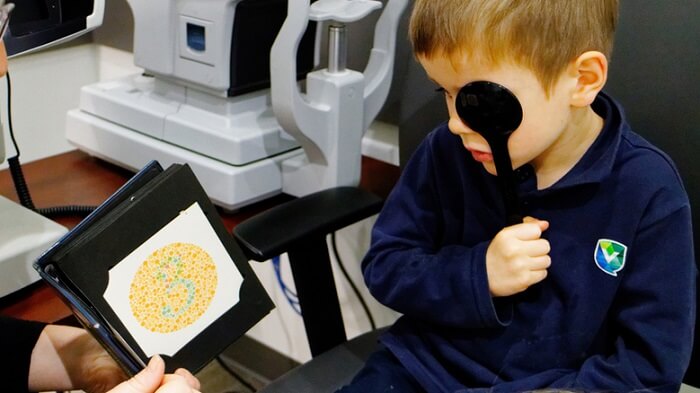 Image Credit: everymum.ie
Image Credit: everymum.ie
If the child is able to identify alphabets or even maybe follow the lines with their finger, we will be able to do simple tests to check all colour blindness.
Well, I believe by leading by example, if we lead a healthy lifestyle, our children will follow and also adopt a healthy lifestyle.
And most importantly for children at this point in time is digital eye syndrome where some children develop refractive error, they develop squint, they develop all kinds of any eye conditions, just because you are exposing them to too many digital devices such as handphones as well as computers.
So, it would be good either to stop or limit the exposure to these devices.
https://www.youtube.com/watch?v=sU3H81heEuM
Disclaimer: The information provided in this article is for informational purposes only and should not be considered as medical advice from Motherhood. For any health-related concerns, it is advisable to consult with a qualified healthcare professional or medical practitioner.
For more insightful stories and fun recipes, stay tuned to Motherhood Story!
-
![img]()
Teaching Kids About Money: An Age-by-Age Guide
Rachel Yeoh
August 29, 2021
4 min
When should you expose your children to money?
As soon as they learn how to count!
Counting does not mean anything to them other than something they need to memorise. But if children can see the why’s behind learning numbers, they will pick it up quicker. If you want your children to grow up and be good stewards of money, they need to have experience handling it.
For those of you pondering on how you can introduce money to your children, here is an age-by-age guide for you.Ages 2 to 4
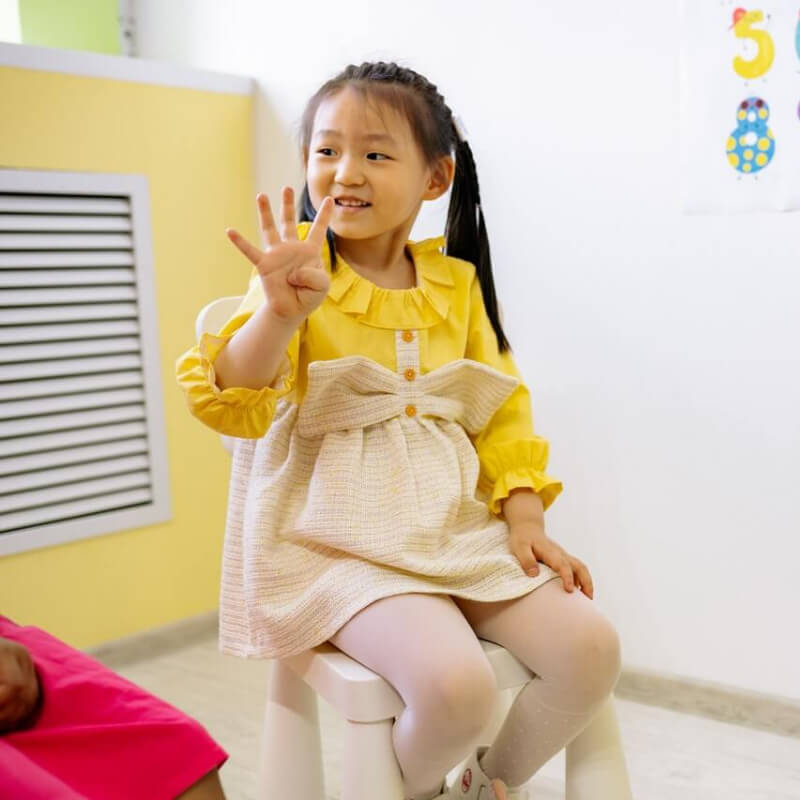 Image credit: Pexels
Image credit: Pexels
After learning their one, two and threes, give your child a reason to count!
No more counting apples and oranges on flashcards, you can give them something more ‘adult’ to count - like coins.
Start by introducing them to coins. Dig out the one, five, ten, twenty and fifty sen coins and just let them feel, observe and allow them to tell you what they see. This is part of coin recognition.
Once introduced to the coins, ask them questions like:
Which has a bigger number?
Which has the highest value?
Which has the lowest value?
Can you group similar coins together? Image credit: PxFuel
Image credit: PxFuel
It is likely that they do not understand the value of money yet, but they would know which is a bigger number than the other. They may not know anything beyond ten or twenty, but fifty is not a far cry from where the level they are currently at.
To make coin recognition activity fun, get your child to place a piece of paper on top of coins and “emboss” them by colouring over the coins. Talk to your child about the coin, what is on the coin and its value.Ages 5 to 6
At this age, they are ready to be exposed to basic commerce. They will know that money is needed to get items in return after observing parents shopping for groceries. To deepen their knowledge on how money is used, introduce it to them through play.
At home, introduce an imaginary shop where they can exchange play money (or real money if you have enough change) to “purchase” items. You can use the toys, fruits, pillows or even cereal boxes as part of the items that are on sale. Use stickers to label the price of each item before giving your child(ren) play money.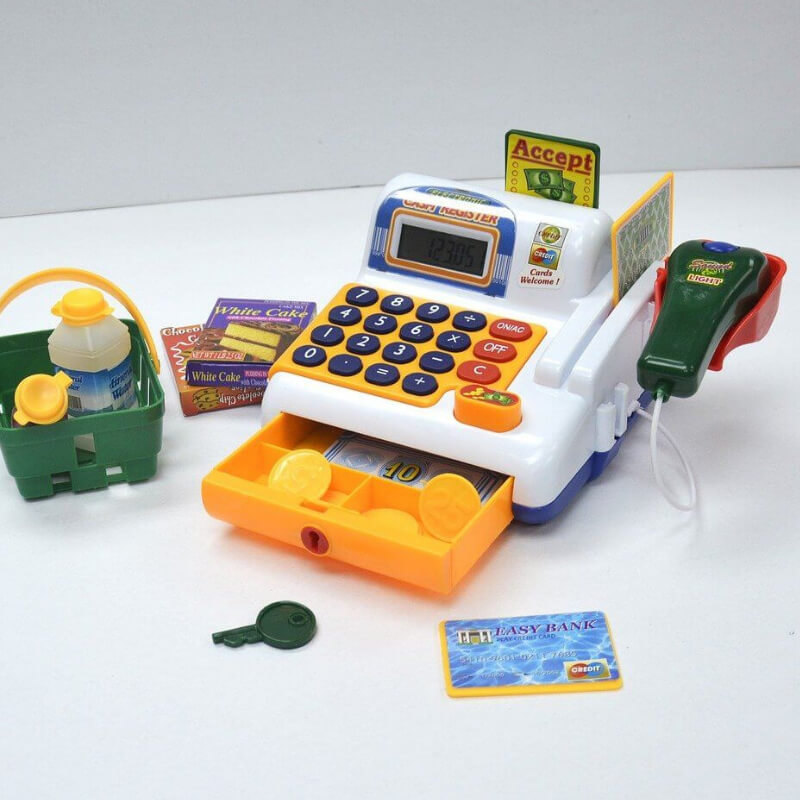 Image credit: Pixabay
Image credit: Pixabay
Take turns to be the cashier and remember to allow them time to count, do simple mathematics and return change when applicable.
Later on, when children are finally allowed to go shopping with mommy and daddy, let them pay for small priced items or collect change for an item bought.
Then, ask them questions like:
How much does the item cost?
How much did you pay the cashier?
How much change did the cashier give to you?
You don’t need a financial academy for your child - at this age, they should just be healthily exposed to it.Ages 7 to 9

Most parents will start giving their children pocket money or an allowance once they start attending primary school. During recess time, they are on their own, having to make decisions on what food to buy with the money they’ve got. If you have not taught them about savings, now is the perfect time to teach them about savings.
Remind them to keep the change that remains after their school day in a coin box. You could go a step further by getting them to fill in a ledger - a very simple one where they note down how much they received, how much they spent and how much is saved. Image from Pexels by Pixabay
Image from Pexels by Pixabay
Once they reach a threshold amount of, say, RM100, celebrate by making a to the bank.
Help your child open a bank account that is separate from your special savings for him or her - this particular account will be their pride and joy, work stemming from their saving habit.Ages 10 to 12
Most parents leave their children to their own devices once they know how to spend and save their money. But one essential lesson that needs to be taught that is, unfortunately, not imparted in schools is household budgeting. Image credit: Pexels
Image credit: Pexels
You might be thinking, “They are still so young, why should they be bothered with household budgeting?” - but you must remember, at this age, they are considered tweens, and they probably have items they want to buy with their pocket money. One way to give them perspective is to involve them in household budgeting.
One way to do so is by introducing an envelope system, where an amount of money is put in an envelope and entrusted to your child. Then they are supposed to budget the money wisely for mealtimes. That means they cannot overspend what was budgeted for family mealtimes.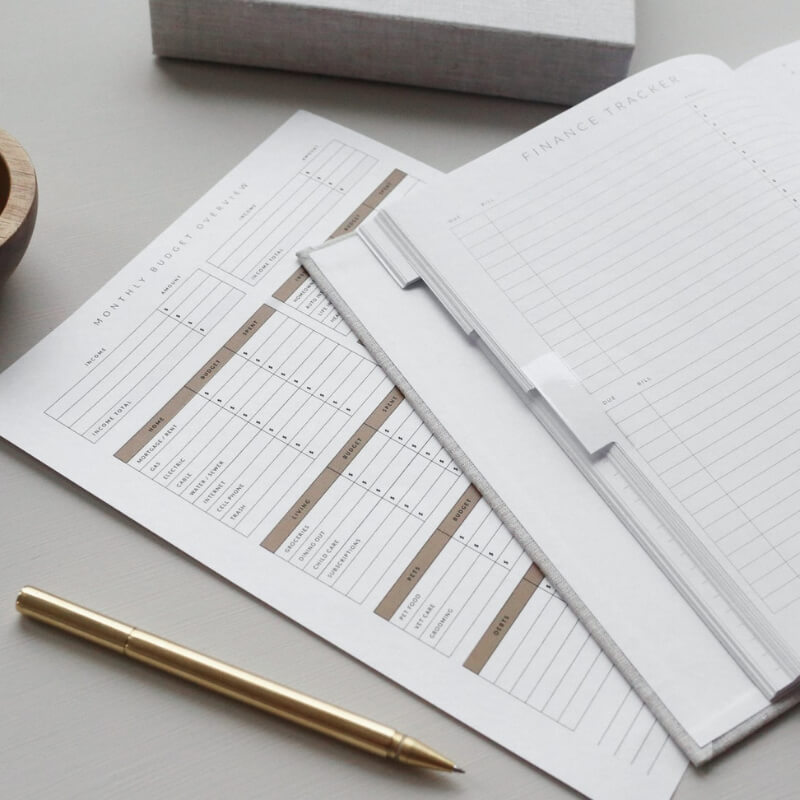 Image credit: Pexels
Image credit: Pexels
Alternatively, you can draw up a simple budgeting worksheet, huddle together as a family and plot the needed and expected expenditure for the next fortnight. Your child can fill the worksheet and even contribute ideas or possible expenses needed for the week. It can also be a good time for them to tell you education expenses that should be in the budget - like activity books, mathematical or art tools, for example.Modelling good financial habits
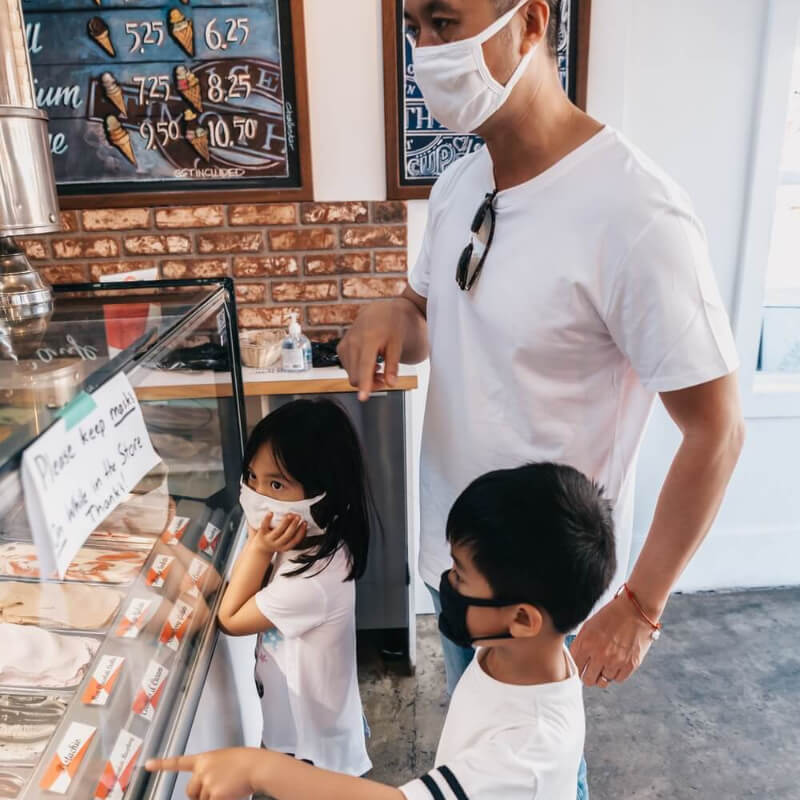 Image credit: Pexels
Image credit: Pexels
Aside from teaching your children about money, it is also crucial to model it. If money is a hush-hush matter in the home where it is a topic only for adult ears, children will naturally grow up with a false perspective and relationship with money. Without exposure to what a budget is, then they might just think that all money is meant to be spent without contemplating if the purchase is wise or not. Maybe they might be too afraid to spend money on anything at all, and that is unhealthy too!
Therefore mommies and daddies, how do you approach money? Answer that truthfully, and you will guide your children to be better money managers in the future.
For more interesting stories and fun recipes, stay tuned to Motherhood Story! -
![img]()
Sustaining Dreams for a Brighter Future
Qaseh
August 18, 2021
2 min
Dutch Lady #DanaRM1JutaHarapan campaign awards 10-year-old Nur Afia Qistina Zamzuri with Skim Simpanan Pendidikan National (SSPN-i) education fund worth RM25,000 to pursue her dream job in sustainable fashion industry.
Beauty is in the eye of the beholder, and for a young girl in the small town of Kuala Pilah in Negeri Sembilan, the beauty of the natural world was simply irresistible.
The daughter of an art teacher, Nur Afia Qistina grew up spending evenings in the garden with her beloved grandfather, mixing colours to create new shades of green so she could recreate the plants and trees using her own customised palette.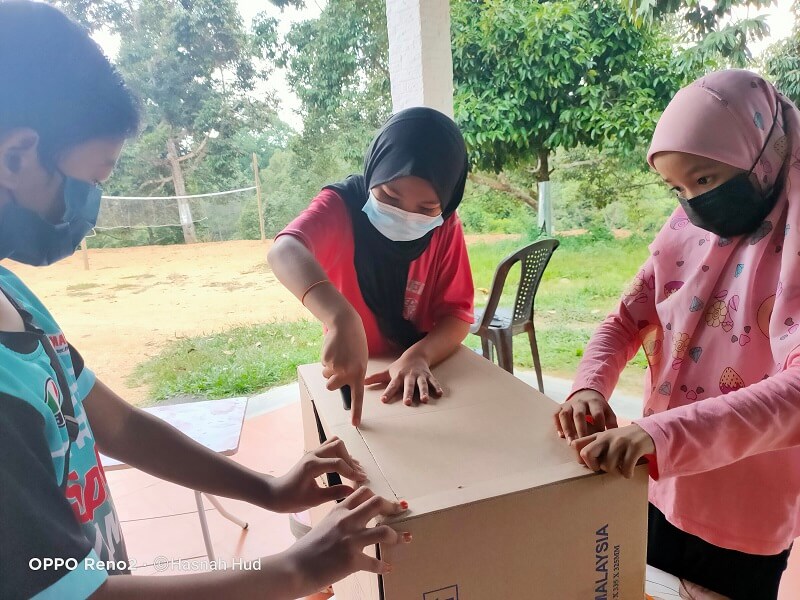 Afia and her friends from the community making a wayang kulit box.
Afia and her friends from the community making a wayang kulit box.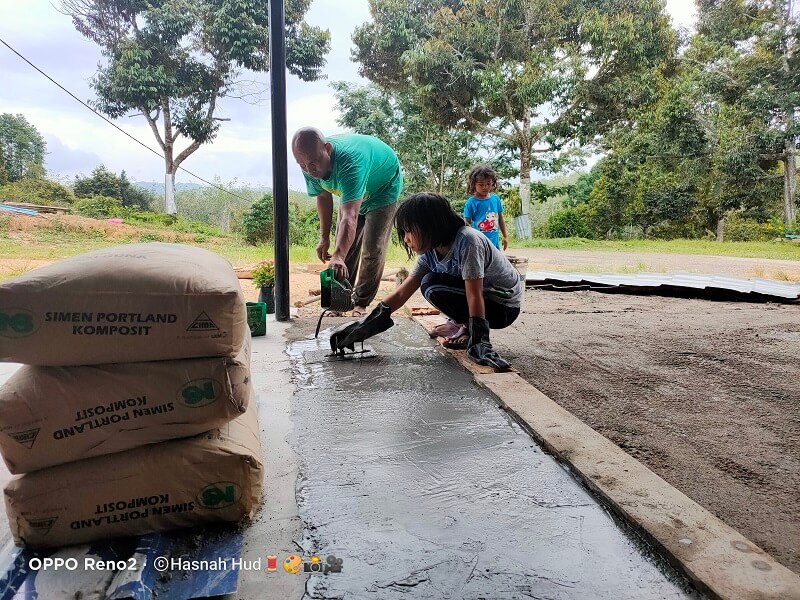 Afia helping her dad building a parking lot.
Afia helping her dad building a parking lot.
From thereon, determined to share her love of painting with everyone, this passionate 10-year-old made her mark by creating murals on school walls for her teachers and fellow students to enjoy. Naturally, she’s also a regular helper with art teachers, helping to prepare materials for classes, and volunteering to facilitate art classes within her own community.
With such drive, it’s no surprise that she has won several art competitions and earned numerous student awards including the Anugerah Ikon Murid, Tuanku Bainun Young Changemakers Award 2020 and the state-level Pertandingan Pingat Hang Tuah 2020 in recognition of her aptitude for art and positive attitude.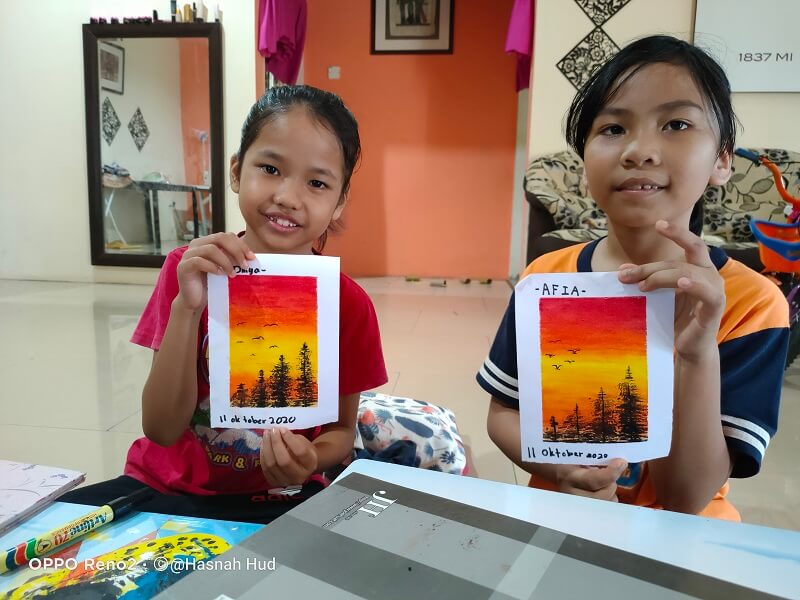 Afia teaches her friend Dhiya Amani, 10 to draw with a crayon.
Afia teaches her friend Dhiya Amani, 10 to draw with a crayon.
However, this young talent has even more to offer. It wasn’t long before she turned to sewing, creating pretty yet practical pillow and pencil cases, purses and pouches, which she would sell for pocket money and to buy more supplies.
However, she would also gift them to friends who needed them, and her compassionate nature compelled her to do her part in the COVID-19 fight by sewing personal protective equipment (PPE) for medical frontliners serving in the local clinics and hospitals.
Now, this young painter, seamstress and philanthropist can add another notch in her belt - as a recipient of a Skim Simpanan Pendidikan National (SSPN-i) education fund worth RM25,000.
Made possible by the recently-concluded Dutch Lady #DanaRM1JutaHarapan campaign, the allocation of RM1,000,000 will be disbursed to a total of 40 children, with Nur Afia Qistina being one of them.
“We at Dutch Lady believe in building strong foundations for children to grow and develop well. This is in line with our purpose of Nourishing Malaysians with quality dairy nutrition to help them move forward in life. We are thrilled to be able to support the education of 40 children via the #DanaRM1JutaHarapan campaign and 160 more who will be receiving smart devices to facilitate their on-going learning and development throughout this pandemic. We received entries from hundreds of promising young children from all over Malaysia and while it was hard to make the final selections, we hope that all the winners will continue to strive towards their dreams and know that Dutch Lady will always be here to support them nutritionally,” said Ramjeet Kaur Virik, Managing Director of Dutch Lady Milk Industries Berhad.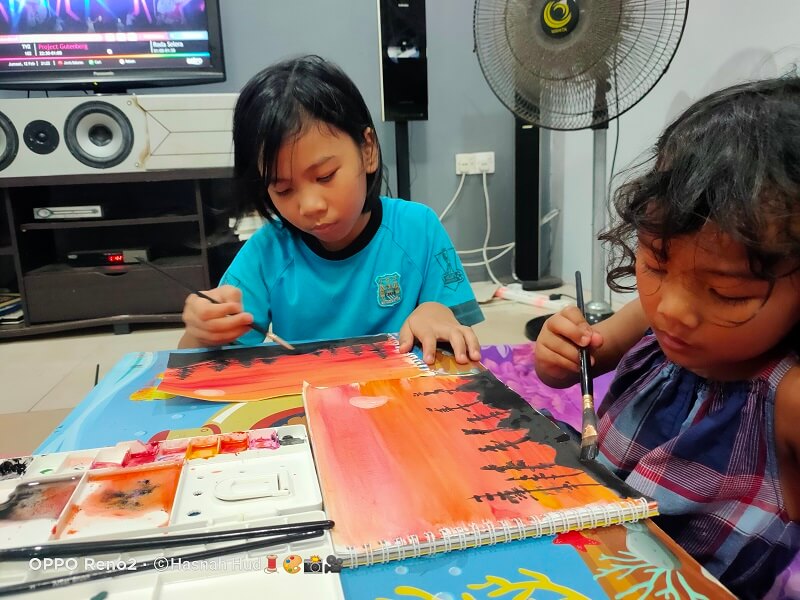 Afia with her sister Ariana, 4.
Afia with her sister Ariana, 4.
For promising young students like Nur Afia Qistina, who demonstrates talent and admirable qualities such as drive, ambition and civic pride, this education fund could make all the difference in her future, allowing her to pursue her dreams of becoming a fashion designer, with a focus on sustainable fashion.
With her win, Afia can now inspire other like-minded children to follow their big dreams, with a big heart.
-
![img]()
First Year Baby: One-Month-Old Developmental Milestones
Jia Ying
August 23, 2021
4 min
We last talked about First Year Baby: Newborn Development Milestones, and now let's head into their first month!
Having your one-month-old baby in your arms, you might have this question in mind: What should my 1-month-old be doing?
While it might slightly differ for every baby, there are some developmental milestones that you can keep track of.
Read on to discover every aspect of your 1-month-old baby!One-Month Developmental Milestones In Different Aspects
1-Month-Old Sleep
You can expect your one-month-old to sleep about 15 to 16 hours per day with around three naps during the daytime. As for the night, he would sleep for around eight and a half hours with interruptions.
If your baby doesn't fall asleep easily, she might be overstimulated or uncomfortable. Or, he just needs more cuddle from you. Try out with different methods to identify the root cause.
If this situation persists, do consult your paediatrician.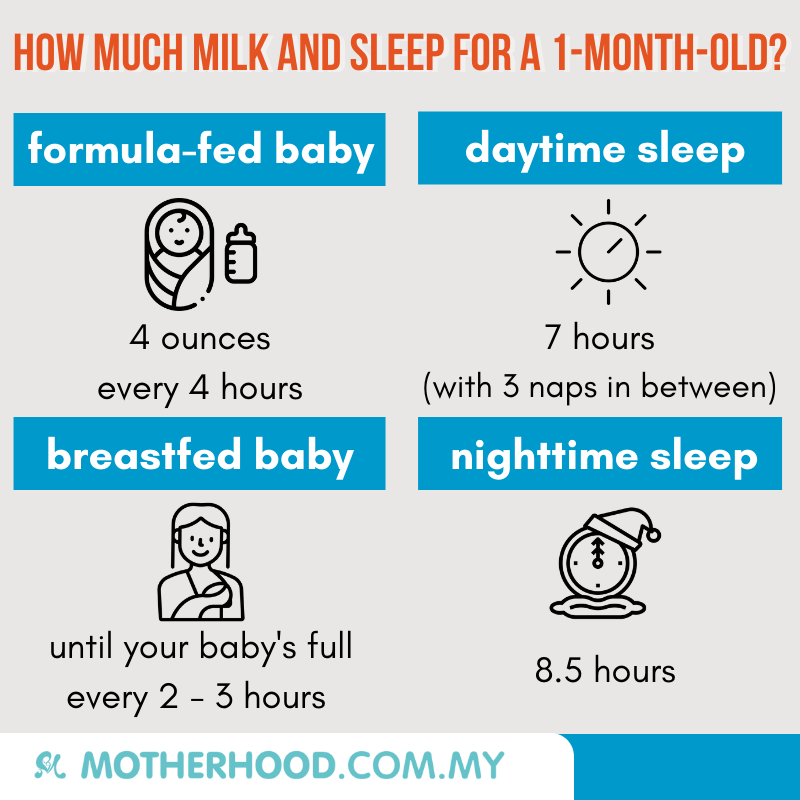 Image credit: Motherhood Story
Image credit: Motherhood Story1-Month-Old Feeding
With your one-month-old baby, you should feed him with only breast milk or formula or even a combination of both. Here's how much a one-month-old baby should eat.- If you are feeding your baby with formula, he should have four ounces for every four hours.
- If you are breastfeeding your baby, he should be breastfed for every two to three hours.
In addition, you can look for these two signs to know that your baby has had enough to eat:- seems satisfied or even fall asleep in the middle of the feeding process
- has four to six wet diapers per day
Speaking of diapering, you should change your baby's diaper as soon as it becomes soiled. This is essential in preventing diaper rash. So, here's how you can get your baby from a dirty diaper into a clean one effectively: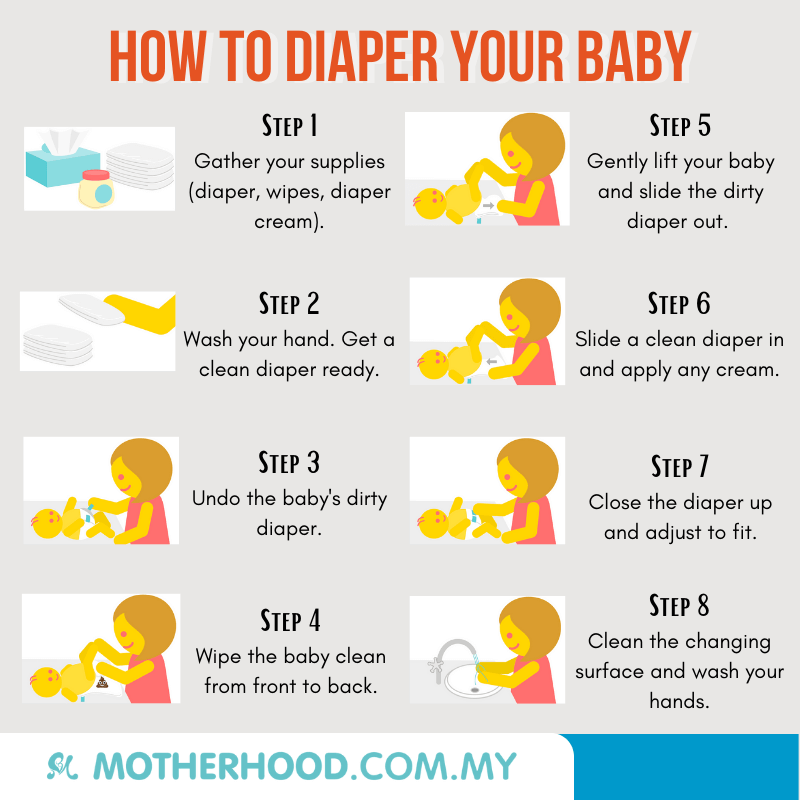 Image credit: Motherhood Story; Illustrations credit: Matthew Taylor
Image credit: Motherhood Story; Illustrations credit: Matthew Taylor
To ensure that the diaper is not loose or too tight on your baby, simply test it by ensuring that you can fit two fingers in between the diaper and your baby's skin at his waist.
Don't forget to burp your baby after the feeding to avoid any stomach issues, too.Key Milestones In Growth
Here's the average weight and length gain that you can expect from your one-month-old baby.- Weight: will grow around 0.68 to 0.9kg
- Length: will gain 2.55cm t0 3.8cm
Key Milestones in Skill Development and Senses
Key Milestones In Movement
- Attempts to turn his head from side to side
- Tries to hold his head up when he's on his tummy
- Keeps hands in tight fists
- Portrays strong reflex movements
While starting to stretch his arms from his body, he would try to stretch and kick her legs out too to strengthen his leg muscles.
Wondering whether your baby can walk at his first month?
Having the instinct for walking, he will appear to take a few steps if you support him on a solid surface.Key Milestones In Five Senses
- Cries out of distress or when they were upset
- Starts to make eye contact with anyone close to him and stare at faces
- Focuses 8 to 12 inches away
- Can follow objects briefly with his eyes
- Prefers objects with black and white patterns
- Prefers human face
- Notices sounds around him
- Prefers sweet smell
- Prefers soft sensations over rough handling
You will start to notice your baby always gazes at you whenever you are talking. If you wish to attract your baby's attention, just keep him nearby you and continue talking. No toy is needed to get his attention!
On top of this, he would coo and make some sounds whenever he sees his parents. So, here's the golden time for you to repeat some sounds to them so that they can mimic and say out those sounds.
Looking into soothing your baby's cries, you can try out swaddling. Swaddling is a technique in which you wrap up your baby in a blanket to make him fell secured and warm.
Simply follow the following steps to make your own 'baby burrito' for swaddling.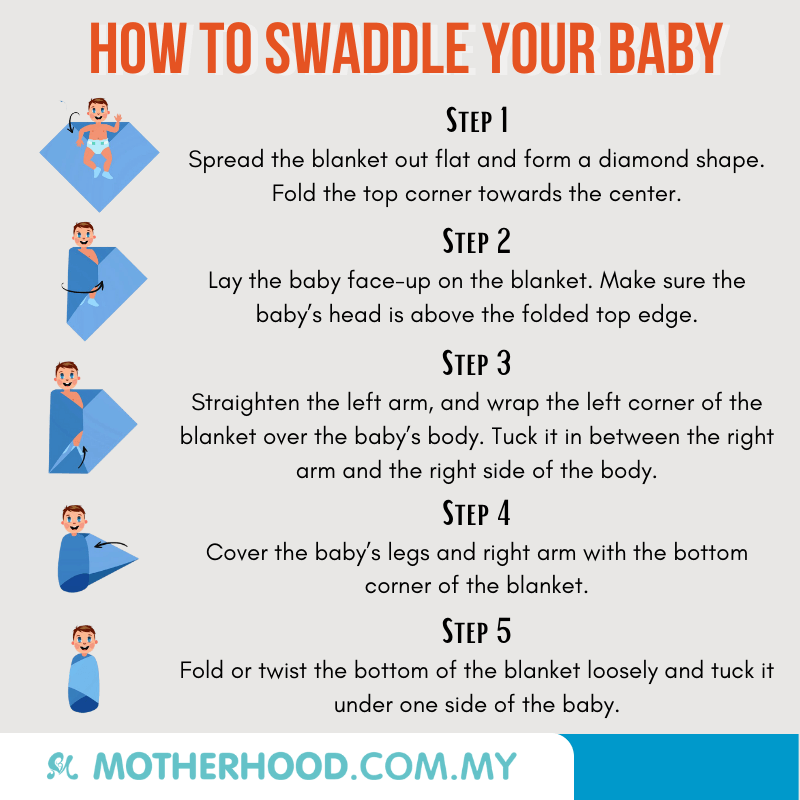 Image credit: Motherhood Story
Image credit: Motherhood Story
Mind that you should stop swaddling when your baby is two-month-old where he is trying to roll.Supporting Your Baby in His One-Month Developmental Milestones
You can shower your baby with more love by spending more time with him. You can talk or even tell him stories while choosing to play with him during your free time. You can first start with using words, sounds, and facial expressions, while allowing him to reply you with his coos, gurgles and smiles.Additionally, you can try out these six activities with your one-month-old baby for more excitement and growth.
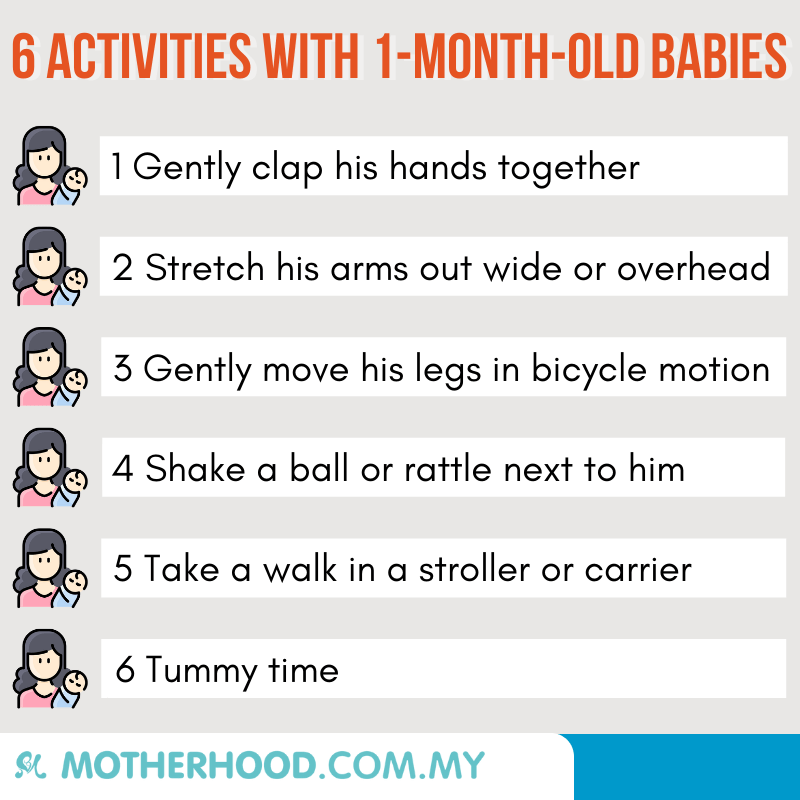 Image credit: Motherhood Story
Image credit: Motherhood StoryWitnessing Your Baby Grow in an Instant
You are now clearer about your baby's one month developmental milestones, but in truth it's more about spending more time with him.
You would realise it is worth your time as you would be able to witness those satisfying moments of your baby trying out new things. And these moments would not come again if you were to miss it.
So, let's cherish our moment with our lovely little babies and look forward to more milestones to be achieved!
For more interesting stories and fun recipes, stay tuned to Motherhood Story!
Navigation
Our menu boxes are very flexible and easy to use




